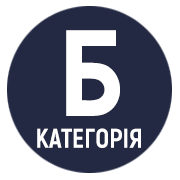PECULIARITIES OF TEACHING THE SURGICAL DISCIPLINE IN A HIGHER EDUCATION INSTITUTION AMIDST WAR
DOI:
https://doi.org/10.32782/eddiscourses/2023-1-4Keywords:
war in Ukraine, medical students, medical education, distance education.Abstract
The beginning of military aggression by russia caused the suspension of education at all levels in our country. From the middle of March 2022, studying takes place in a distance format. But, although all educational institutions had the experience of distance learning, studying during the war revealed its own peculiarities. During the war in Ukraine, health care facilities remain military targets, causing casualties among medical personnel. This, as well as service in the ranks of the Armed Forces, volunteering and migration of medical workers, led to a shortage of medical personnel. Under such conditions, the contribution of senior year students and graduates of higher medical institutions was significant. Therefore, the continuation of medical education during the war is of great importance for the effective functioning of the health care system. Goal. To highlight the experience of organizing distance learning at the clinical department during the war years and the problems that were identified during the classes. Materials and methods. The classes were held on the basis of the Department of General Surgery No. 1 of the National Medical University named after O.O. Bogomolets daily with mandatory synchronous and asynchronous methods, and the organizational component ensured their permanent connection. The asynchronous component was organized by the student’s response to 10 test tasks on the topic of the lesson, 2 clinical tasks and 2 theoretical questions on the Likar.nmu electronic platform, which was developed during the coronavirus pandemic. In order to reduce the load on the teacher under stressful conditions, a time limit was set for answering questions for students. The synchronous component of distance learning was implemented using Zoom, which is held daily according to the schedule. In order to improve the level of students’ communication skills, knowledge of deontology and improvement of clinical thinking, as well as practical application of the acquired knowledge, simulations of clinical cases with examples and photographs were conducted during each lesson. Despite the pandemic of the 2020–2021 coronavirus infection, which accustomed people to new rules of life, the conditions for obtaining an education have become much more difficult than they were. Active hostilities on the territory of Ukraine led to additional obstacles. The lack of simple things, such as sufficient sleep, time and quality of food, emotional state limited the students’ ability to study, because the basic needs were not realized at a satisfactory level. Added problems not only with physical health. The mental state of teachers and students leaves much to be desired. As a result, the level of stress and exhaustion of teachers was above average. Teachers had to adapt to unexpected conditions, teaching in accessible ways, while at the same time having to work and live in a hospital for weeks, not seeing their families, and all this during hostilities, air raids, and in general, with the threat to their own lives and the lives of students. The sounds of air raid sirens demanded to interrupt the online part and descend into the bomb shelter. Effective learning was also hindered by the lack of a stable electricity supply, the Internet, and being in different time zones. Students’ involvement in volunteering and being on the front line hampered their ability to engage and focus on the learning process. Conclusions. Despite the sudden onset of military aggression, institutions of high medical education quickly switched to distance education. As during the time of the quarantine due to COVID-19, online education consisted of synchronous and asynchronous parts, connected through an organizational component. However, active hostilities and the constant threat of airstrikes created additional obstacles: safety issues during studies, the emotional state of students and teachers, Internet problems, power outages, and being in different time zones. In addition, volunteer activities and participation in military actions of teachers and students prevented full participation in the educational process.
References
Вища освіта в Україні: зміни через війну: аналітичний звіт / Є. Ніколаєв, Г. Рій, І. Шемелинець. Київ : Київський університет імені Бориса Грінченка, 2023. 94 с.
Education under attack – 2010 - Brendan O’Malley - Google Books.
Nazarenko, Y., Kogut, I., & Zheriobkina, T. (2022). Education and war in Ukraine (February 24 – April 1, 2022). Analytical center Cedos. URL: https://cedos.org.ua/researches/osvita-i-vijna-v-ukrayini-24-lyutogo-1-kvitnya-2022/.
Schulten, K., Gonchar, M., & Engle, J. (2022, March 16). Teaching resources to help students make sense of the war in Ukraine. The New York Times. URL: https://www.nytimes.com/2022/03/16/learning/lesson-plans/teaching-resourcesto-help-students-make-sense-of-the-war-in-ukraine.html.
Roborgh S, Coutts AP, Chellew P, Novykov V, Sullivan R. Conflict in Ukraine undermines an already challenged health system. Lancet. 2022 Apr; 399(10333):1365-7. URL: https://doi.org/10.1016/S0140-6736(22)00485-8.
Ministerstvo osvity i nauky Ukrainy. Pro zatver-dzhennia Polozhennia pro dystantsiine navchannia No466. 2013 Apr 25. URL: https://zakon.rada.gov.ua/go/z070313.
Rajab KD. The effectiveness and potential of E-learning in war zones: an empirical comparison of face to face and online education in Saudi Arabia. IEEE Access. 2018 Jan; 6:678394. URL: https://doi.org/10.1109/ACCESS.2018.28001644. Dobiesz VA.
Schwid M, Dias RD, Aiwonodagbon B, Tayeb B, Fricke A, et al. Maintaining health professional education during war: a scoping review. Med Educ. 2022 Apr; 56:793804. URL: https://doi.org/10.1111/medu.14808.







